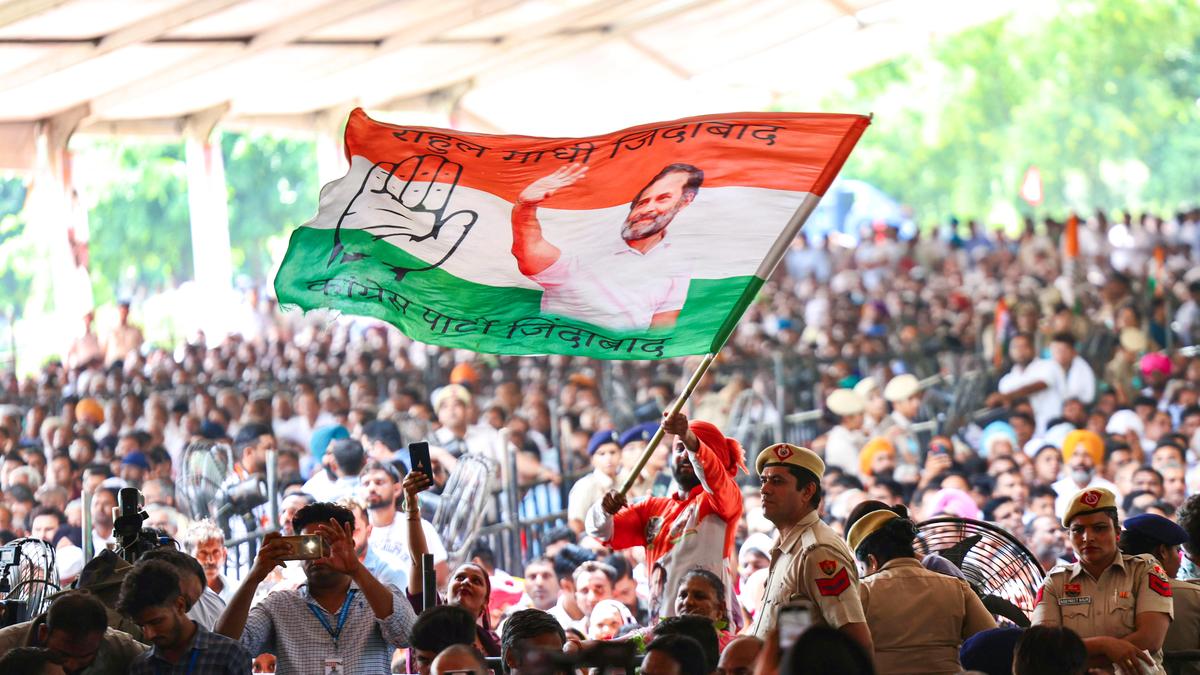
Decoding Haryana’s political landscape
The Hindu
Haryana Assembly elections analysis: Caste dynamics, rural-urban divide, OBC support, and Jat-Dalit coalition strategies explored.
The story so far: The Haryana Assembly elections for a 90-member House are slated for October 5, and as the campaign intensifies, the State’s political dynamic is undergoing significant changes. Caste equations, internal party wranglings, the decline of sub-regional elites, and the impact of social movements are reshaping the electoral landscape.
Also Read: Haryana Assembly polls: Parties chase Dalits; voters chase papers
Yes, a pronounced rural-urban divide exists in Haryana’s political scenario. As the crow flies to the west of Delhi and towards Punjab, there is a visible distribution of economy and society along the varying geography of the State. Urban regions of Gurugram and Faridabad in the south and Ambala, Panipat and Kurukshetra in the north have more industries and are dominated by businessmen, traders and middle-class voters who are occupationally linked to the non-farm sectors. The agrarian belt in the south-central area, from Rewari, Bhiwani, Jhajjar, Jind with a primarily rural population and some peri-urban population in Rohtak, Sonipat, Hisar are places where voters are closely linked to the farming sector. This region is also home to a significant Jat population, often described as the Jat belt of Haryana.
Speaking to Jat farmers in the villages of Uchana Kalan, we came across three major issues shaping the electoral discourse for this campaign. These were: Kisan (the farmers’ protest and the contentious farm bills, which were later rescinded by Prime Minister Narendra Modi’s government), Jawan (the Agniveer scheme launched by the Bharatiya Janata Party (BJP) government in New Delhi), and Pehelwan (the wrestlers’ protest against the alleged sexual harassment by BJP politician and former chief of the wrestling federation). In some villages, a few disgruntled young men also add a fourth dimension to this discourse by bringing up the issue of rising unemployment. Essentially, these three or four factors are consolidating the anti-BJP vote and playing a key role in shaping the anti-incumbency electoral mobilisation, particularly among the Jat community.
Also Read: Will the Agnipath scheme be revamped? | Explained
In the industrial regions and among businessmen, traders as well as among many service-based communities within the Other Backward Classes (OBCs), one can easily find support for the BJP, which ranges on multiple persuasions, from Prime Minister Modi’s strongman image to the BJP’s emphasis on nationalism and patriotism. However, even within this support base, there is no visible enthusiasm for any State-level leadership within the BJP.
Regional parties like the Indian National Lok Dal (INLD) and the Jannayak Janata Party (JJP), which traditionally rely on their rural and Jat support bases, lack substantial organisational presence in urban centres. They have not established strong cadres in cities, limiting their influence among urban voters. Conversely, the BJP and the Congress have a more substantial foothold in urban areas. Their better-established organisational structures, broader appeal, and focus on urban development issues enable them to dominate the urban electoral landscape. Urban voters tend to prioritise concerns such as infrastructure, employment opportunities, and governance — areas where national parties often concentrate their efforts. The parties are also more tightly organised around communities in the rural areas compared to urban constituencies, which is also reflected in the campaigning style in both regions.

The girl, who was admitted to Aster CMI Hospital with alarming breathlessness and significant pallor, was diagnosed with Wegener’s Granulomatosis (now known as Granulomatosis with Polyangiitis or GPA), a rare autoimmune condition that causes spontaneous bleeding in the lungs, leading to acute respiratory failure.

ACB files case against IPS officer N. Sanjay in Andhra Pradesh. The official is accused of manipulating the tender processes for awarding contract for development and maintenance of AGNI-NOC portal, and conducting awareness meetings for SC/STs. It is alleged that the total value of properties stolen, or involved in the case is estimated at ₹1,75,86,600.









